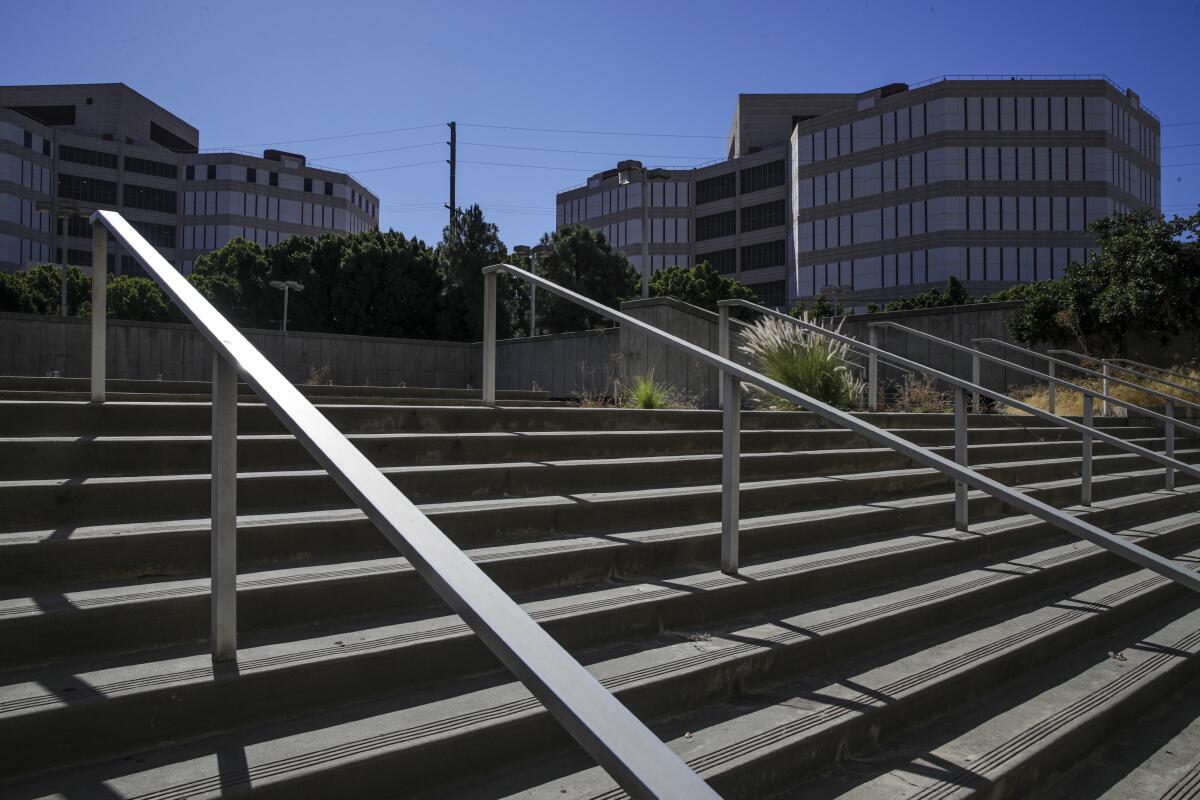Hypothermia suspected in the deaths of 2 L.A. County inmates last winter

Two Los Angeles County jail inmates who died last winter showed signs of hypothermia before their deaths, according to a new report released by county watchdog officials.
The 38-page Office of Inspector General report offers few other details about how the two inmates died but describes a jail system so ill-equipped for cold weather that indoor temperatures sometimes fell into the 50s and inmates slept inside plastic garbage bags for warmth.
And even when the department had hundreds of thousands of thermal underwear sets on hand, the report noted, officials did not distribute them because they said that they were not required to and that they feared inmates would destroy or misuse them.
“Our jails have dangerous cold spikes, and when we called this to the attention of the Sheriff’s Department, they expressed no concern beyond saying that if they gave prisoners warm clothing, they’d hide contraband in it,” Inspector General Max Huntsman told The Times.
In an emailed statement Tuesday afternoon, the Sheriff’s Department said officials were aware of the report and its allegations about the reluctance to hand out warmer clothing.
“We are looking into this matter in order to ensure and continue to provide the inmates the necessary level of care while being housed within our jail facilities,” the statement said.
The quarterly report comes amid another string of deaths behind bars: According to the Sheriff’s Department website, three more people died in L.A. County jails Tuesday. County data put this year on track to be one of the jails’ deadliest of the last decade. Since January, records show, 22 inmates have died in the department’s custody.
According to the Office of Inspector General, the L.A. County jails have often struggled with high temperatures in the summer months, in part because many of the facilities are old and plagued by maintenance issues. Usually, the report said, jailers deal with that by setting up fans, handing out ice and letting people shower more frequently.
During last winter’s storms and cold spells, though, some of the county’s seven jails also struggled to handle low temperatures inside. That generated an increase in complaints to oversight officials, and during site visits, Office of Inspector General monitors found some areas dropped to as low as 58 degrees indoors. Some people took to using plastic garbage bags as blankets, even sleeping inside them to shield themselves from the cold.
“To mitigate these living conditions, many people in custody have requested long-sleeved thermal undergarments,” the report said. Usually, the jails issue each inmate a short-sleeved shirt and pants, one short-sleeved undershirt and one blanket, though some facilities allow people extra clothing depending on the weather.
When the Office of Inspector General asked about the possibility of distributing thermal undergarments, the Sheriff’s Department said that — based on medical need or inmate worker status — it had given out around 1,000 thermal tops and 900 thermal bottoms across a population of more than 13,000.
To give everyone warmer clothes, officials told the inspector general’s office, they’d need about $3.1 million.
Then in early April, the Sheriff’s Department said that it already had 315,000 thermal tops and bottoms in inventory, but that state regulations didn’t require them to be handed out.
“The Sheriff’s Department command staff believe that people in custody would destroy the thermal undergarments and create security concerns by concealing contraband in thermal undergarments,” the report added. “However, the Office of Inspector General sees little logic in holding large stores of thermal undergarments while people in custody experience precariously low temperatures.”
Amid the jails’ struggles with heat and warm clothing, the report said two people died in custody during the late fall of 2022 and early winter of 2023, after experiencing “symptoms consistent with hypothermic arrest.”
Jail officials told The Times on Tuesday that the deaths were not related to a heating problem or a lack of warm clothing. In one case, Assistant Sheriff Sergio Aloma said, a man died after he flooded his cell and was covered in water. In the other case, Aloma said it wasn’t clear to which death the report was referring. Because final autopsies have not been completed for either inmate, it’s unclear whether hypothermia contributed to either death.
Still, one former jail employee — who asked not to be named due to pending litigation — said the department’s inability to handle winter cold snaps has been a persistent problem. Inmates frequently ask for more blankets, the employee said, as they are allowed only “very thin” blankets, something that is “unreasonable.”
A lawyer with the American Civil Liberties Union of Southern California — which is representing inmates in two major lawsuits against the county and its jails — said she had repeatedly spotted people in the jails using trash bags for warmth.
“It’s cruel, it’s inhumane,” said Melissa Camacho, the ACLU attorney. “And something frustrating to me is that the Board of Supervisors is not acting like this is an emergency. Who’s going to be held responsible for the gross negligence that is leading to death in the county jails?”
One of the ACLU lawsuits is headed for a contempt hearing later this month. The case dates back to the mid-1970s and is focused on jail conditions.
The ACLU lawyers representing people in jail are asking for a complicated fee schedule of monetary sanctions against the county for its failure to fix persistent problems behind bars, despite decades of consent decrees, settlement agreements and court orders.
More to Read
Sign up for Essential California
The most important California stories and recommendations in your inbox every morning.
You may occasionally receive promotional content from the Los Angeles Times.











